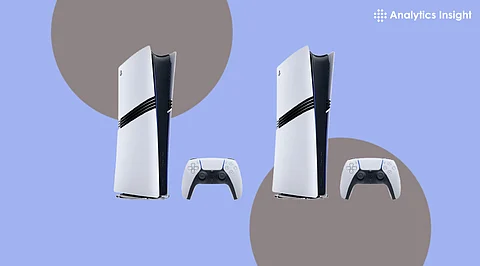

The PS5 Pro offers a 62% GPU performance boost but struggles with inconsistent game support.
PlayStation 6 is expected to launch between 2027 and 2028, featuring true 8K gaming and near-zero load times.
PS6 may feature storage from 2TB up to 8TB SSD, plus WiFi 7 and HDMI 2.2 connectivity.
The PlayStation 5 Pro launched with high expectations. It promised the most powerful console experience so far. The upgrades included better hardware, AI-driven upscaling, and improved support for next-gen visuals. However, its reception has been mixed. While it is the most advanced PlayStation to date, many gamers and critics feel underwhelmed. The premium price and lack of a standard disc drive are key points of frustration.
The PS5 Pro costs $700, and nearly $800 if you want the optional disc drive. This set a high bar for performance and satisfaction. The console offers a 62% boost in GPU performance over the base PS5. It also has improved ray tracing and a 2TB SSD. But not all games benefit equally. Some features, such as PlayStation Spectral Super Resolution (PSSR), demonstrate noticeable improvements in only a few select first-party and cross-gen games.
Third-party games often run worse or show new visual glitches. These include noise and shimmering effects. Critics also point out inconsistent support for Sony’s own exclusive titles. Several major games lack Pro-specific patches or updates. Early adopters feel frustrated because the console’s premium price suggests it should offer better performance. Sony is working on fixes, but the perception of a ‘Pro’ system that doesn’t always deliver may hurt consumer trust.
Despite the PS5 Pro’s mixed reviews, the PlayStation brand remains strong. Excitement is building for the PlayStation 6 (PS6), expected to be released between 2026 and 2028. Industry trends indicate significant advancements in hardware, performance, and features.
The following features are anticipated from PS6:
Enhanced Graphics and Performance: The PS6 is expected to feature a faster GPU and CPU. It may support true 8K gaming, higher frame rates, and better ray tracing. Next-gen SSDs could cut load times to nearly zero.
Advanced Virtual Reality: Following the success of PSVR2, PS6 will likely integrate VR more deeply. Wireless VR headsets, improved haptic feedback, and better motion tracking could be features.
Backward Compatibility: Sony is likely to maintain backward compatibility. PS5 and possibly older PlayStation games should be compatible with PS6.
Cloud Gaming and Digital Integration: PlayStation Now support and the digital storefront will expand. This will allow gamers to stream high-end titles without needing expensive local hardware.
AI Enhancements: PS6 may introduce more intelligent AI features. These could include adaptive difficulty levels, smarter non-player characters (NPCs), and personalized game recommendations.
Also Read: Best PlayStation Plus Games to Play
The PS5 Pro’s reception highlights the importance of clear communication and robust developer support. Performance must be consistent across all games, not just a few. For PS6 to succeed, Sony must make its innovations accessible and useful to everyone. Fixing issues such as inconsistent game optimization and avoiding unnecessary hardware purchases will be crucial. Building trust and excitement depends on these improvements.
A disappointing PS5 Pro might impact the timeline and features of the PS6. If the Pro struggles due to price or a lack of exclusives, Sony may accelerate PS6 development. However, industry sources suggest the next-gen console will still launch between 2027 and 2028, following the usual seven-year cycle. A delay seems unlikely since the PS5 Pro is only a mid-cycle upgrade.
Sony may adjust marketing and pricing for PS6. The company could focus on clear value and better differentiation. This means bigger hardware upgrades, true 8K support, AI integration, and zero-load gaming. Backward compatibility and cloud gaming will likely be priorities.
Processor and GPU: PS6 may use an AMD Zen 5 or Zen 6 CPU and an RDNA 5 GPU. Mass production could start in 2026.
Storage: Storage might range from 2TB to 8TB SSD, ensuring fast load times and large libraries.
Connectivity: The console is likely to support HDMI 2.2, Wi-Fi 7, and USB 4.
PSSR Upscaling: Expect major improvements in upscaling tech for smoother 4K and 8K gameplay.
VR: The next-gen PlayStation VR could feature wider fields of view and improved feedback.
DualSense 2.0: The controller may get upgraded haptics and adaptive triggers.
Handheld Companion: Sony may release a PS6 handheld device that runs PS5 games at lower specifications.
Digital-Only Model: A digital-only PS6 model is likely, but disc support may remain for compatibility.
Cloud Gaming: Stronger cloud integration and a revamped digital store will enhance the experience.
PS5 Pro’s mixed reception is a lesson for Sony. It highlights the need for better support, clear value, and consistent performance. The PlayStation 6 promises big improvements in graphics, VR, AI, and cloud gaming. It is expected to launch around 2027 or 2028. If Sony listens to gamers and developers, the PS6 could restore excitement and trust. For PlayStation fans, the future looks promising despite the Pro’s setbacks.
